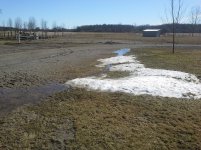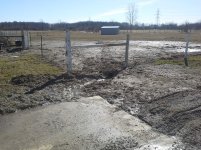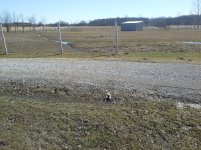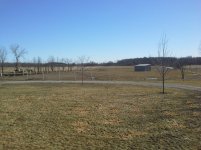dgeesaman
Silver Member
The upper end of my property does not drain very well, and since we added some horse paddocks, got worse.
I have rain water draining through the paddocks. We need to scrape and replace the paddock surface with something durable and crowned and direct the water out more directly. Project item 1.
The whole upper end of the property drains toward one corner where we have a drainage ditch. The trouble is much of way there is across driveways and walking areas for the horses. I think we need to build drainage features that get the water out without flooding and saturating these walkways. I know where the water wants to go, and I think it needs to take a more refined version of the same path, but I don't know anything about drainage design.
I want to have a basic strategy that will yield good drainage and isn't some amateur hack job. Any tips on what tools are going to be most valuable and what methods will work best? (I'm an engineer of the mechanical sort, so collecting site measurements and building a future state plan in the computer would be perfectly reasonable).
If there is a good reference book or source I should start with, let me know.
Thanks,
I have rain water draining through the paddocks. We need to scrape and replace the paddock surface with something durable and crowned and direct the water out more directly. Project item 1.
The whole upper end of the property drains toward one corner where we have a drainage ditch. The trouble is much of way there is across driveways and walking areas for the horses. I think we need to build drainage features that get the water out without flooding and saturating these walkways. I know where the water wants to go, and I think it needs to take a more refined version of the same path, but I don't know anything about drainage design.
I want to have a basic strategy that will yield good drainage and isn't some amateur hack job. Any tips on what tools are going to be most valuable and what methods will work best? (I'm an engineer of the mechanical sort, so collecting site measurements and building a future state plan in the computer would be perfectly reasonable).
If there is a good reference book or source I should start with, let me know.
Thanks,



